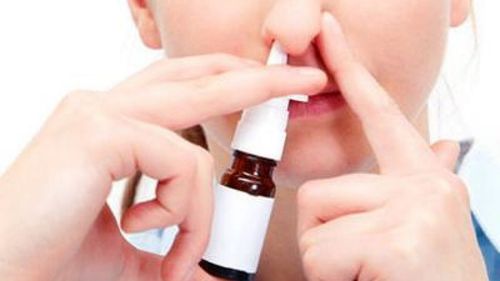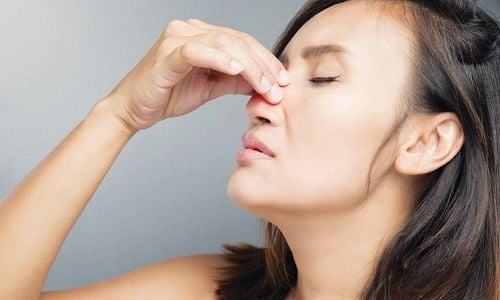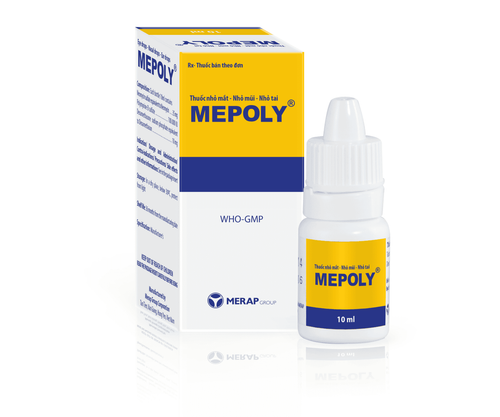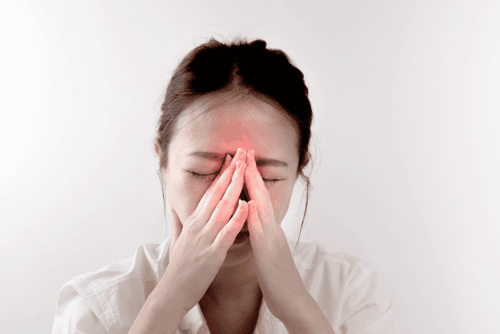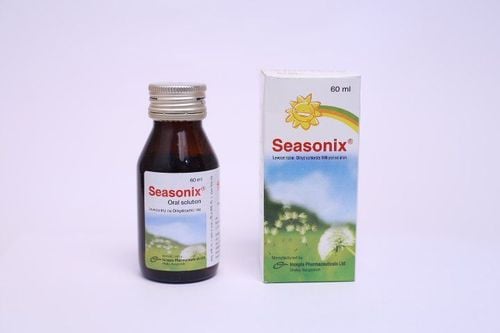This is an automatically translated article.
The article was professionally consulted by Dr. Nguyen Van Dinh - Head of Respiratory - Asthma - Allergy - Clinical Immunology Unit, Vinmec Times City International Hospital.Allergic rhinitis is a common disease for all ages, but is more common in adults with chronic symptoms, causing many troubles in life. However, there are now many effective ways to treat chronic allergic rhinitis, avoiding the risk of unwanted complications such as sleep disturbances, chronic sinusitis,...
1. Features of allergic rhinitis
Allergic rhinitis is divided into two types, cyclical and non-cyclical.
Cyclic allergic rhinitis mostly occurs at the beginning of the cold season or the beginning of the hot, humid season, the incidence depends on the weather. In addition, the treatment of allergic rhinitis depends on the severity of the disease and whether it has progressed to chronic or not. Patients often experience the following symptoms:
Feeling spicy in the nose, itchy nose, leading to continuous sneezing. Eyes stinging, red eyes, watery eyes. Lots of clear water-like discharge from the nose. The oropharynx feels itchy. Sneezes and runny noses appear more in the morning when you wake up, and in the evening, they calm down. If left untreated, allergic rhinitis symptoms can last from a few days to a few weeks.
For non-cyclic allergic rhinitis, the presentation is the same as that of the cyclic type. However, the difference is that the disease does not appear seasonally, regardless of the weather. Rhinitis does not come on suddenly, but only a few sneezes, but the stuffy nose usually increases and lasts longer in the time between two consecutive attacks.
Patients who suffer from day-to-day allergic rhinitis for a long time will become chronically ill. At that time, nasal congestion occurs almost regularly, potentially leading to ringing in the ears, accompanied by headaches, severe headaches (these symptoms are quite similar to sinusitis, which is easy to confuse). In some cases, patients with chronic chronic allergic rhinitis can cause olfactory dysfunction (loss of smell) or snoring due to nasal congestion.
How to cure chronic allergic rhinitis has also become more difficult. Although allergic rhinitis is not life-threatening, nor is it an infectious disease or an emergency, it causes many inconveniences to the patient's life and significantly affects the health of the patient. Moreover, due to nasal congestion, most patients have to breathe through their mouth, leading to pharyngitis, bronchitis, most likely leading to asthma. Patients with chronic allergic rhinitis need to be treated, otherwise they will always feel fatigue, memory loss, irritability, anxiety and sometimes lead to depression.

2. Distinguishing allergic rhinitis and normal rhinitis
To distinguish allergic rhinitis and normal (non-allergic) rhinitis, people are based on the criteria outlined in the following table:
| Viêm mũi dị ứng | Viêm mũi bình thường | |
| Tiền sử | Bệnh nhân đã có tiền sử liên quan đến dị ứng | Bệnh nhân có tiền sử bị viêm mũi do nhiễm khuẩn và lây nhiễm qua đường hô hấp |
| Nguyên nhân - Cơ chế |
Do cơ chế phản ứng của cơ thể với các dị nguyên, làm giải phóng histamin quá mức, gây ra phản ứng quá mẫn (dị ứng).Tác nhân gây bệnh: • Bên ngoài: Phấn hoa, lông thú cưng, khói bụi, hóa chất… • Bên trong: Chủ yếu do cơ địa dị ứng. |
Viêm mũi do nhiễm khuẩn: Vi khuẩn, virus…Viêm mũi không do vi khuẩn: Thường gặp nhất là viêm mũi vận mạch, chủ yếu do mất cân bằng giữa hệ thần kinh giao cảm và phó giao cảm. |
| Triệu chứng | Nhanh, đột ngột, với các dấu hiệu điển hình như: Hắt hơi, sổ mũi, chảy nước mũi, ngạt mũi 2 bên và ngứa mũi. Có thể gặp các triệu chứng viêm kết mạc dị ứng đi kèm. | Không đột ngột, hắt hơi ít nhưng lại nghẹt mũi nhiều, có thể ngạt 1 bên mũi, nước mũi có dạng dịch nhầy đặc hoặc dịch mủ. Bệnh nhân mệt mỏi, rã rời toàn thân, có thể bị sốt và sợ lạnh. |
| Xét nghiệm | Lượng tế bào bạch cầu ái toan (eosinophil) tăng đáng kể | Có rất ít các tế bào bạch cầu ái toan (eosinophil) |
| Cách điều trị viêm mũi dị ứng |
• Hạn chế tiếp xúc với các tác nhân gây dị ứng. • Dùng thuốc kháng histamine dạng xịt hoặc uống để giảm nhẹ triệu chứng thể nhẹ và vừa. • Dùng thuốc corticoid dạng xịt mũi có vai trò quan trọng trong kiểm soát viêm do dị ứng tại mũi, góp phần kiểm soát ổn định bệnh. • Thuốc xịt mũi khác: Sử dụng tại chỗ để khắc phục nhanh các triệu chứng khó chịu của bệnh viêm mũi dị ứng như thuốc co mạch, dung dịch vệ sinh rửa mũi,… |
• Viêm mũi vận mạch (không do nhiễm khuẩn): Thường sử dụng các thuốc cường giao cảm, hoặc ức chế phó giao cảm. Để chữa trị triệt để, bệnh nhân có thể được phẫu thuật cắt dây thần kinh ở hố chân bướm hàm trong hốc mũi. • Viêm mũi do nhiễm khuẩn: Sử dụng kháng sinh thích hợp tùy vào nguyên nhân. • Có thể kèm thêm thuốc xịt mũi để giảm nhẹ các triệu chứng viêm mũi không do dị ứng. |
3. The most effective way to treat allergic rhinitis
When recognizing symptoms and suspecting allergic rhinitis, patients should see an otolaryngologist for early diagnosis and treatment. Treatment of allergic rhinitis should be carried out early, to avoid the disease progressing to a chronic leading to pharyngitis, bronchitis, and asthma. Besides, it is not advisable to self-diagnose the disease as well as buy medicine to treat it yourself.
In addition, patients need to perform allergen isolation for the most effective treatment of allergic rhinitis:
Do not keep dogs and cats in the house because it is possible that animal hair is an allergen. . If it is not possible to not raise them, you should limit contact with them to the maximum extent. Periodically change and wash blankets, sheets, pillows, mattresses, including seat covers, mattress covers, in order to limit the existence and create growth conditions for some parasites. Keep the house cool, clean, avoid moisture, and prevent mold growth. Daily oral hygiene at least 2 times, especially brushing before and after waking up, if possible, should clean teeth after each meal. Quit smoking, pipe tobacco. Do not eat foods that are known to cause allergies or are known to cause allergies (for example, seafood). Limit exposure to dust (indoor dust and street dust): Wear a mask when cleaning the house and when going out. In particular, the weather at the change of season often changes erratically from hot to cold, easily making the body sick. People with allergies, often sick, need to actively keep their body warm: dress warmly, wear a scarf, supplement with adequate nutrition, and avoid bathing too late.
When suffering from allergic rhinitis, the patient needs to adhere to treatment, coordinate the use of drugs according to the doctor's prescription and isolate all allergens. Thus, the treatment of allergic rhinitis is most effective.
Please dial HOTLINE for more information or register for an appointment HERE. Download MyVinmec app to make appointments faster and to manage your bookings easily.





